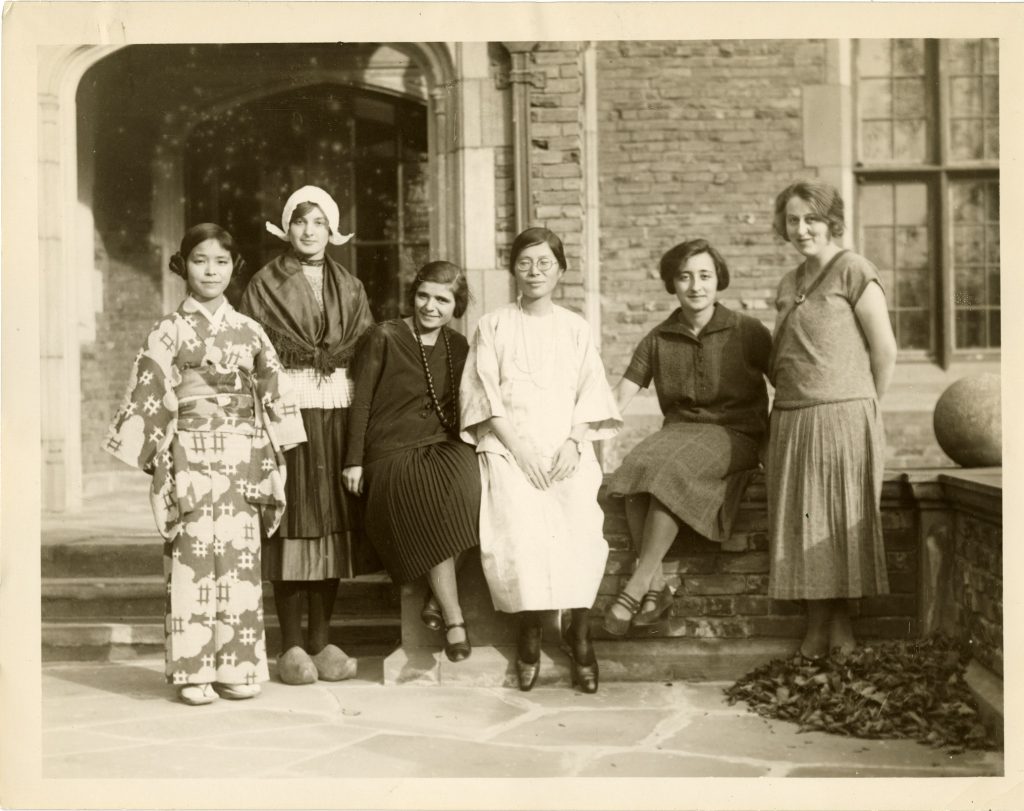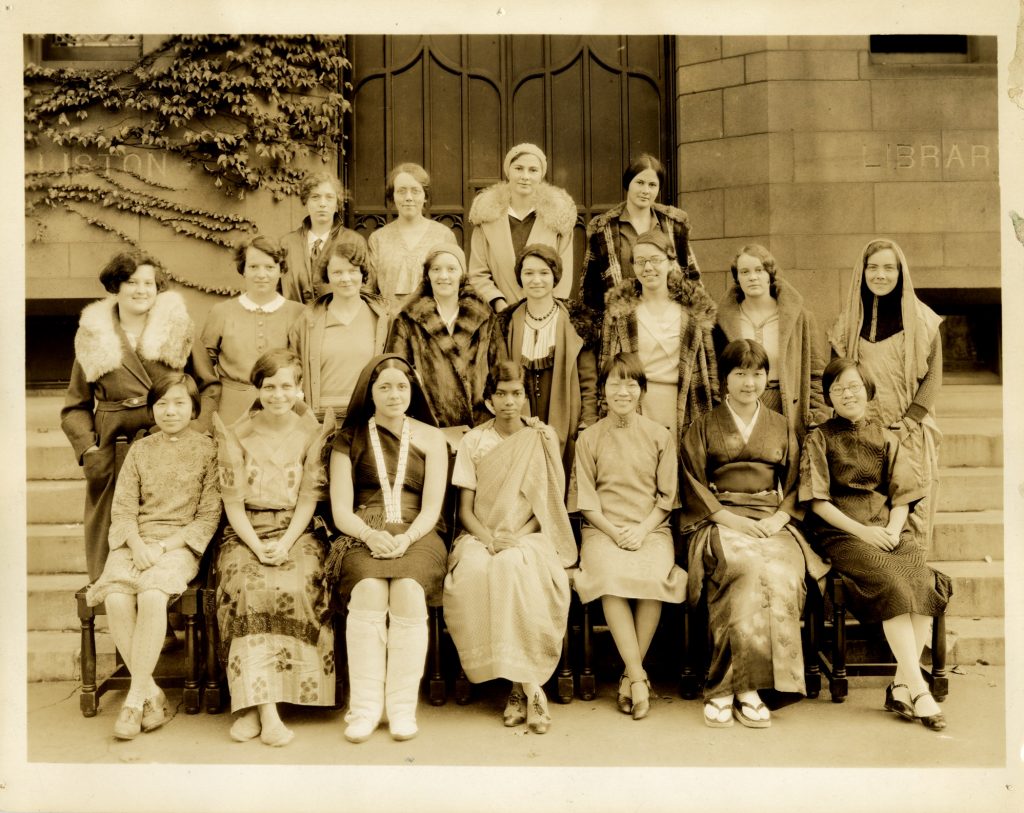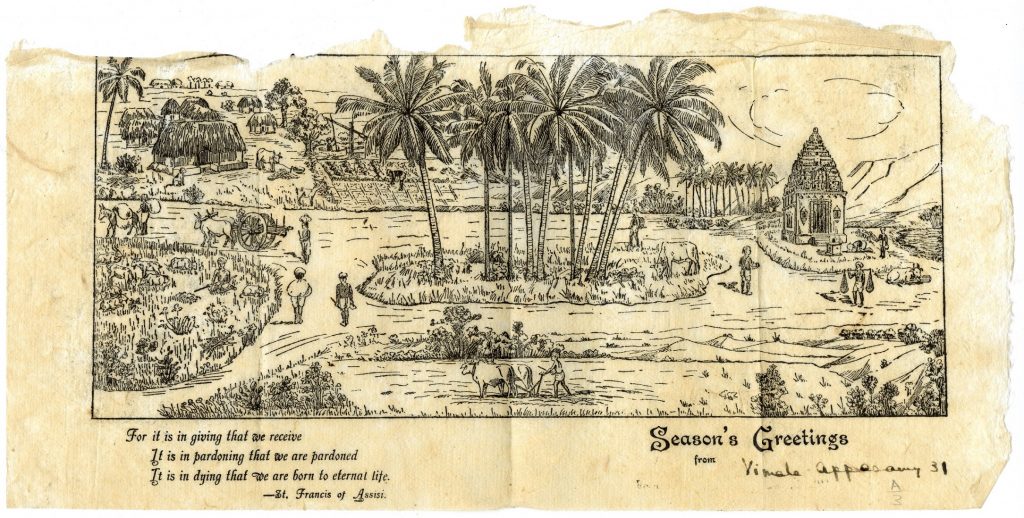A major site of the international students’ community on campus was the Cosmopolitan Club. The club was founded around 1920, and membership in the club was compulsory for international students when they started at Mount Holyoke. Members met informally for conversations and the occasional trip, but most of their meetings incorporated discussions of the students’ home countries. As the overall population of international students expanded, the Cosmopolitan Club doubled its membership from the 1920s to the 1930s.
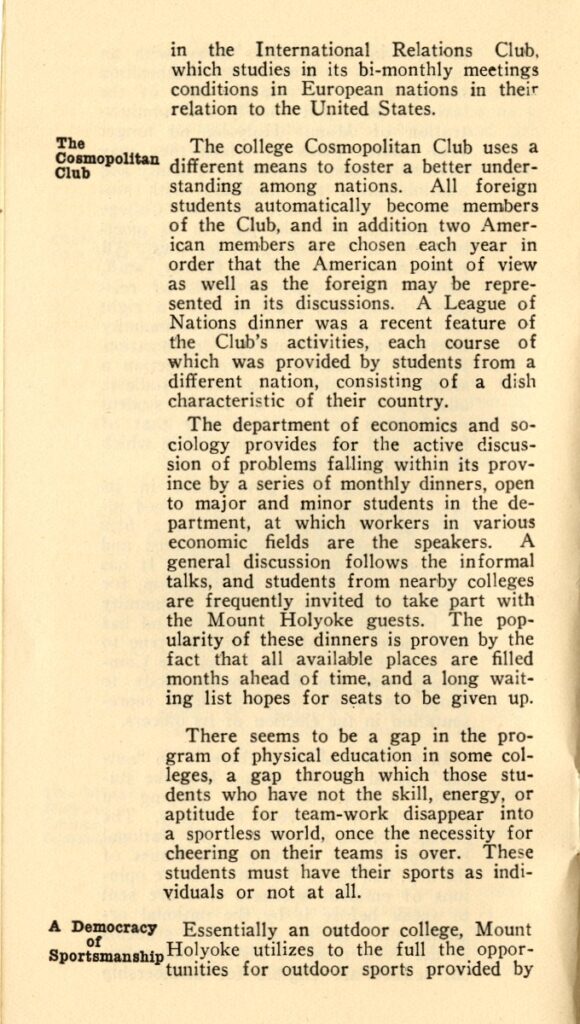
As described in the June 7th, 1930 issue of the Mount Holyoke News by Edith DeLima (India), MA 1930: “The knowledge of long-distance separation from home, familiar faces and friends which are shared in common, brought members in close sympathy and co-operation and created a frankness and intimacy which nothing else could.” For many international students, the Cosmopolitan Club was a place to unwind from many of the expectations of college life in the United States and to foster a community that extended beyond their time at the College.
The Cosmopolitan Club originally only allowed for international students within its ranks, but began to allow two American students (by appointment via student board members) in 1934. Contemporary clubs such as the International Relations and League of Nations had both international and domestic students as part of their membership, but the Cosmopolitan Club was the only club on campus that allowed for multiple offices to be held by foreign students.
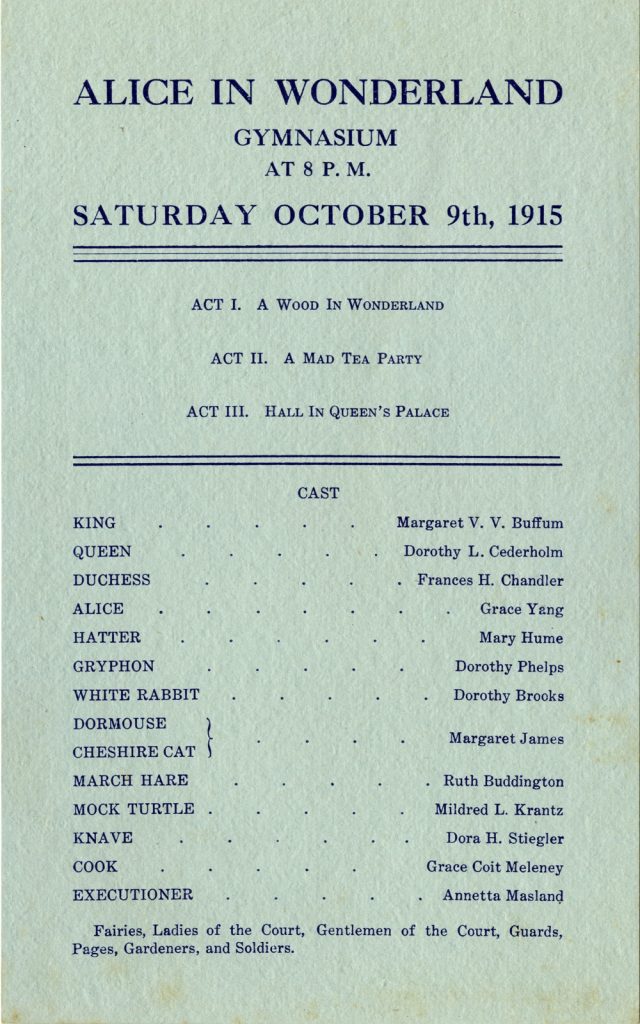
Involvement in the dramatic arts was somewhat popular with international students, both on and off the stage. For example, Dora Mohinie Maya Das (India), class of 1909, was a celebrated playwright during her time at Mount Holyoke, and her play “The Hindu Wife of Ram Lal” was the first full-length student-written play produced by the Dramatic Club.
Many international students donated pieces of art from their home countries to their favorite professors. This sketch depicts a pastoral scene in India. Appasamy would go on to become headmistress of the Vidyodaya School and based the school’s songbook on Mount Holyoke’s.
